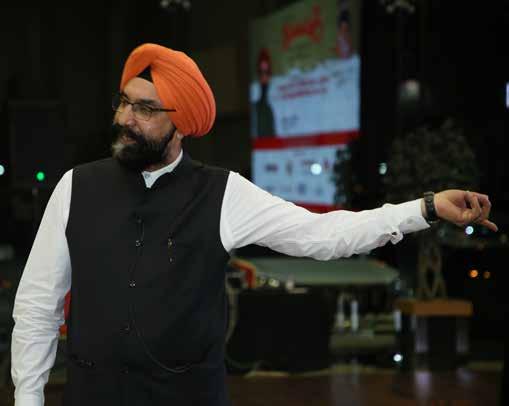
28 minute read
FOOD
Indian mithai industry – changing the formula
As a new generation demands a new taste, India’s multi-million dollar mithai and namkeen industry seeks new markets abroad and tweaks its ancient recipes By ADITI NAGAPPA
Advertisement
In 1999, when the scion of the famous Gupta Brothers of Kolkata, Inder Kumar Gupta and Bahrain foodie P.K. Ravi brought a taste of Gupta’s legendary mithai expertise to the Kingdom through ‘Rangoli Mithai’, the self-appointed gourmets in Bahrain were thrown off-track. In the first weeks, there were many complaints and advise given on how the sweets were just --- not sweet enough. To all the suggestions, Gupta, a veteran with decades of expertise, patiently replied, “In my mithai, if it is kaju katli, you have to taste the cashew; if it is a pista roll, you have to taste the nuttiness. In my ras malai, the sweetness goes from the cottage cheese roll into the milk and not the other way round.”
Soon mithai-lovers in Bahrain and even neighbouring Saudi Arabia were beating a path to his shop and the delicate taste of Rangoli’s mithai had won palates. That’s good news and unusual too, because, for all its festive reputation, Indian sweets have a bad rap with the younger generation and with Bahrainis too. They find it overpoweringly sweet even though there is an emotional connection. My favourite story happens to be about HRH the Prime Minister, Prince Khalifa bin Salman Al Khalifa – when the Bhatia community once went to his majlis, they took a framed photo of the Prime Minister and his older brother the late Amir Shaikh Isa bin Salman Al Khalifa visiting a Bhatia merchant’s home for Diwali as children accompanying their father, the then Ruler.
“I remember Diwali,” the Prime Minister said, “We used to get laddoos with a silver coin embedded in it and we looked forward to it.”
Branded growth
The mithai and namkeen industry in India is a massive traditional industry and there are about 500 types of mithai, namkeen and savories commercially trending in the country.
It is the biggest buyer of raw materials such as flour, besan, sugar, ghee, oils and spices. The industry employs more than one crore people directly and many more indirectly. In January 2020, the Federation of Sweets & Namkeen
FOOD
shop; indicating the growth of the industry in the premium league. Almond House, Bikanerwala, Asha Sweets, Haldirams, A2B and many other brands had invested hugely in showrooms to give customers a world-class experience. In Delhi, this writer was awed by a visit to a three-storey, glass-fronted Bikanerwala dedicated to sweets, namkeen and chaat.
“Today namkeen can be found in every nook and corner, from a small village to every mandir, dargah or gurudwara,’’ said Firoz Naqvi, Director of FSNM, adding that the industry had more than a lakh manufacturers across the country doing homogenous business, even though a ma jority of them were not counted in the total turnover of the organised business category.
Every part of India has an iconic sweet shop and more and more brands are
A few heritage brands are trying to upgrade their offerings for today’s cupcake-consuming but health-conscious customers as well. At the 104-year-old, 18-outlet Ghasitaram’s, there is a shift towards more naturally sweetened, nutrient-dense mithais featuring dried fruits and nuts. “The industry is now at a pupal stage waiting to become a butterfly,” said Kunal Bajaj, director at Ghasitaram’s. “We’ve had to give new flourishes to old recipes. At weddings and other catered events, clients ask for mithai cakes, and sandesh in tiramisu and avocado flavours.” The company’s The Mughal-era mithaiwala in Chandni Chowk, Delhi - still going strong in-house R&D lab has recently developed Manufacturers (FSNM) announced K.C. Das is now in Chennai and the and gulab jamun.” that it had achieved the milestone of Southern city’s Grand Sweets and one lakh crore rupee in turnover. This is mainly due to the growth of the Snacks has graduated from an old-style emporium of sweets and traditional New taste tricks branded segment at 25% per annum, snacks to selling them nitrogen-packed Even while big brands are glitzing up and the market as a whole at 10-12%. in outlets as far away as Dubai. their packaging and traditional Indian Companies such as Haldirams, Balaji, Nirmal Jain of Delhi’s Mughal-era sweets and savouries are finding their Bikano, Bikaji, Yellow Diamond and brand Ghantewala, says it is true that way into dutyfree shopping bags of Cornitos had extended their footprint mithai sales are affected by the rise homesick NRIs in airports, within India, overseas also. Automation has played of designer biscuits and chocolate. “ a niche market is gradually forcing open a great role in the development of this Although, these don’t make mithai the door for a new approach to mithai. industry. There are a number of snacks any less important yet the sale does Millennials, tired of the over-sweetened and namkeen manufacturers who had get affected. Say, earlier people who taste and the greasy ghee patina are a very humble start, but today they are bought 1 kg of Sohan Halwa may now making a new generation of halwai doing great business and are making go for 1/2 kg of mithai shared with, think innovatively. hundreds of tons of namkeens and say, a big box of chocolates”, she said. In recent years, a small but significant snacks per day. In the traditional mithai market, set of young chefs and F&B professionals
Within India, big brands are building innovation is slow. Despite the rise of around the country have chosen to modern sweet arcades that are diabetes, for example, Indians shun become halwais (traditional sweet structurally similar to a big jewellery stevia-flavoured or sugar-free sweets. makers of Northern India). With their
stevia-sweetened, sugar-free rasgulla exploring regional markets. Kolkata’s Thousands of skilled halwai work in the informal sector of the sweet-making industry

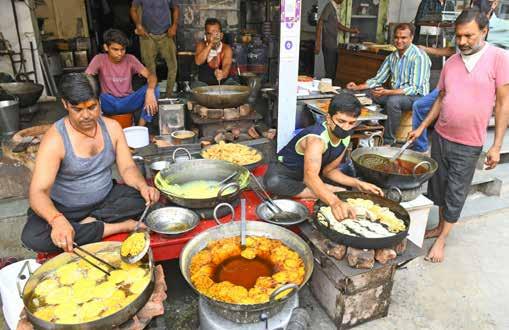
ventures, they’re trying to change mithai’s reputation. Instead of seeing Indian sweets as dated, excessively greasy, syrupy, artificially flavoured and coloured confections, only meant for ceremonies, they want customers to view mithai as a contemporary, conscientiously made, relevant, a fun daily indulgence. This, while continuing to celebrate all that is nostalgic and traditional about mithai. Indeed, these sound exactly like the mithai we eat today – rich, fried, sweet enough to make teeth hurt. We do have our delicate, delicious and not-too-decadent sweets – sandesh and singori, karanji and kozhukattai, among many – but our pervasive impression of mithai is saccharine. It’s this impression that contemporary confectioners are working to dispel.
At the Bombay Sweet Shop, the mithai store owned by Hunger Inc. which

founded the feted restaurant brands The Bombay Canteen and O Pedro, you will find smoked almond chikki with rose petals, orange zest, saffron and melon seeds, as well as a five-seed chikki with melon, poppy, pumpkin, flax and sunflower seeds. The spotlit jewel-case display cases hold seeded jujube-sized Karachi halwa gummies dusted with sharply contrasting citric acid, trufflesized old school motichoor laddoos, ferrero rocher besan laddoos with a hazelnut crust and aam papad lollipops, among other sweet treats.
It is a clever combination of Indian sweets and a riff of a Western chocolatier’s sensibility and across India, many mithai brands are building upon this new vision for Indian sweets. In many ways, modern-day mithaiwalas are also introducing transparency to what has so far been an opaque industry, dominated by halwais who were loathe to share ingredients, recipes and techniques.
Thirty-two-year-old family-run Bangalore-based mithai brand Anand Sweets launched a retail offering early this year that’s exclusively for airport sales. Anand and Sakkare (which means sugar in Kannada) offer Mysore pak made from a specific aged ghee that lends the classic local sweet a smoky, nutty, earthy flavour. The pak’s wrapping at Sakkare looks like a gold bar, evoking the state’s love for the precious metal. Each ingredient in their kitchens comes from a single origin – sesame seeds come from Meerut, for example – known for its superior quality. The sugar in their sweets is pharma-grade and sulphurless. “The art and the science of mithai got lost, and the industry got a bad name,” said Ankush Dadu, the director of marketing and growth at Anand and Sakkare. “Some of it had to do with health – India is the diabetic capital of the world. There was also rampant adulteration, in milk, artificial colours, and the use of excessive sugar. For a long time, people thought of mithai as dirty. So how do we remove the bad name, and make it relevant? If you make people perceive mithai like they do wine, then they’ll begin to understand it. Mithai should never be aspirational or luxurious. It should be gift-able, but accessible, a premium product.”
Similarly, Neelam Saini in Mumbai’s Ornamental Mithai has developed sweetmeats like wasabi-filled motichoor laddoos, as well as lavender coconut laddoos, and Ayurveda-inspired ashwagandha laddoos. Earlier this year, she was working on beetroot tofu halwa and avocado shrikhand.
This experimentation has also won the reluctant respect of traditional halwais. Recalled Girish Nayak, “halwai-in-chief” at Bombay Sweet Shop, “A soan papdi
Mithai, is seen as an auspicious offering - “mooh meetha” or the sweetening of the mouth for family celebrations such as weddings, and big purchases and beginnings (a new car, a factory opening). Even our pantheon is particular – the upcoming Ganesh Chaturthi will see varieties of modak, sweet momo-style delicacies; Maa Kaali is said to like her kheer as much as Lord Shiva likes his thandai. The Rigveda mentions a sweet preparation called apupa, a barley flour cake that is fried (or boiled) and dipped in honey, said to be a predecessor of the malpua. The Manasolassa, written in 1130 AD by King Someswara III, describes a doughnut called golamu, a sugar syrup-soaked cheese and flour fritter called channa, and gharikas, which is udad dal batter fried and soaked in sugar.
Historically, ancient Indian desserts were made of plant extracts from palm sugar and honey until Egypt started supplying sugarcane sugar which ramped up the sweetness quotient massively – even today, the Hindi word for sugar in the interiors is “Misri”, from “Misr” the name for Egypt. Later, China also started exporting sugar to India, leading to the other more common name – ”Cheeni”.
FOOD
halwai in Kolkata insisted I stand outside his main workshop room and watch the process through the window for over two hours,” said Nayak. “Once he realised that I was not just some curious patisserie chef but someone who was genuinely interested in understanding and learning their craft, they allowed me into the main room and over the next week helped me understand the craft and science behind the process.”
Nayak struggled with the lack of documentation, recipes, guides and grades to ingredients used for various preparations. He had to educate himself in things that are barely known outside of the halwai trade – for example, few of us know that the tray used to set Mysore pak is vastly different from what you would use for, say, a kaju katli.
Export high
According to S S Agarwal, promoter of Bikanervala, 20 per cent of the company’s local production of branded sweets is now being exported. And we are growing at the rate of 5-6 percent every year.
Sachin Anand who looks after exports of the same organisation informs that their competitors are Bikaji and Haldiram. ‘Of course, the quantum of export increases during festivals like Diwali etc.‘, he asserts while advising those desiring to foray into exports to stay punctual to be successful.
“We have lot of customers from Dubai for our Sohan halwa who carry loads from the shop but there is no direct export in strict sense”, Nirmal Jain informs.
In an industry that’s run by skilled workers who eyeball quantities, and figure out doneness “andaaze

se ”, modern-day mithaiwalas are bringing the sort of precision, science, documentation, hygiene, lucidity, innovation and creativity that has been thus far reserved for European pastry. It’s a trailblazing new approach and one that seems to be all sweetness and light!
ICRF supports Bahrain’s awareness campaign for healthy and safe summer
The Ministry of Labour & Social Development, Occupational Safety and Health Council and the Ministry of Health, under the patronage of Mr Ahmed Jaffar Al-Haiki, Assistant Undersecretary For Labour Affairs organised an awareness campaign towards a healthy and safe summer 2020.
The campaign was aimed at reducing occupational accidents and diseases during the summer season. The members of the ministries talked to workers of two labour camps – AlGhanah Contracting camp and Cebarco camp.
Indian Community Relief Fund (ICRF) supported this campaign by distributing 200 reusable masks, antibacterial soaps and COVID-19 awareness flyers in two camps. The ICRF also distributed bottled water, fruits and biscuits to around 250 workers at the Madinat Khalifa Health Centre project in Askar to encourage them to stay hydrated this summer. This weekly activity is expected to continue till the end of the August in various worksites across Bahrain. ICRF volunteers also distributed face masks and anti-bacterial soaps to the workers in Askar as well as 150 people in Isa Town.
Meanwhile, 15-years-old Hitanshi Patel found a unique way to show her support to the Indian community. She made and sold paintings to raise money and donated BD 121 to ICRF. A gesture that was appreciated not just by the ICRF but the community at large.


LULU food festival brings world to your table
Culinary excitement with live food shows, celeb chefs and awesome taste


Travel the world with a munch and a crunch as Lulu Hypermarket promises a gastronomic journey that will put adventurous diners in a holiday mood. The Hypermarket where the world comes to shop is well-known for its excellent range and quality of products from around the world and its varied and tasty Hot Foods.
If you have missed travelling to India on holiday, head over to Lulu in Dana Mall on August 15 from 6 p.m. to 11 p.m. for its celebration of Indian cuisine.
“Our store gives us access to the best ingredients from around the world and we also have some very talented in-house chefs and visiting celebrity chefs to make the food delight our customers.”
The Food Festival began with an Indian Food Festival from August 13 to coincide with Indian Independence Day weekend. Besides amazing Indian curries, kebabs and biryani, guests can look forward to live cooking stations and the cookery demo by Chef Pramod of the Spices Restaurant of the Crowne Plaza Hotel on all three days.

Flagship transformed
Meanwhile, why not drop into Lulu Hypermarket’s Dana Mall flagship store which has expanded to serve up a whole new shopping experience for eager Bahrain shoppers? The store has embraced many new food trends, emphasizing healthy eating and variety
as well as convenience and the trademark Lulu quality and price benefits.
“The Lulu journey in the Kingdom of Bahrain began at Dana Mall in 2007 and we are humbled at the warmth with which the Bahrain customer has welcomed us and facilitated our growth to eight hypermarkets across the country,” said Rupawala, “As part of the economic promise of our Chairman and Managing Director Mr. Yusuffali M.A., we have transformed this first hypermarket into a place where customers can find variety, quality and a reflection of the latest retail trends.”
In this first phase of the expansion, the hypermarket level boasts of many new and attractive features. Fastidious shoppers can have the benefit of choosing their own grain and getting
FOOD
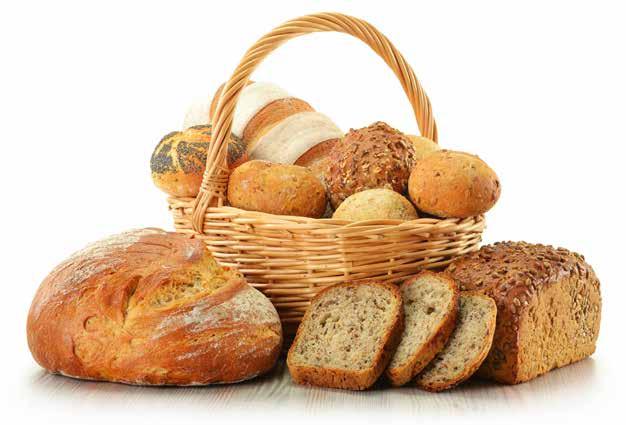
Fastidious shoppers can have the benefit of choosing their own grain and getting it milled into flour while they shop in the new flour mill section. There will be a wide range of organic grains as well as lesser-known millets to choose from and customers can even choose the fine-ness of the milling to suit special recipes.

it milled into flour while they shop in the new flour mill section. There will be a wide range of organic grains as well as lesser-known millets to choose from and customers can even choose the fine-ness of the milling to suit special recipes.
The popular Lulu Hot Foods section has been extended and a variety of culinary live stations added to it: you can choose from Oriental dim sum to Japanese sushi or opt for India tawa and tandoor preparations ranging from breads to dosa, all prepared once you order.
The Lulu Bakery with its specialty breads, cakes and treats has been expanded as well and shoppers can expect a new range of goodies baked to golden perfection by Lulu’s talented bakers.
Those wanting ready-to-go healthy options can choose from a colourful salad bar with vegetables, fruit, fish and meat as well as a ‘Soup of the Day’ special.
The frozen foods section has also been expanded and there will be many new varieties of foods and ingredients from all over the world.
74 th Independence Day Greetings from

The Management, Principal Teachers & Students of NMS-DPS

NEW MILLENNIUM SCHOOL -DPS ‘Where young minds flourish’
BUILDING 399, ROAD 3009, BLOCK,330, BUGHAZAL, MANAMA, KINGDOM OF BAHRAIN TEL: 17272700 | FAX: 17275151 | E-MAIL: nmsedu@nms.edu.bh
New pathways for India’s ancient crafts heritage
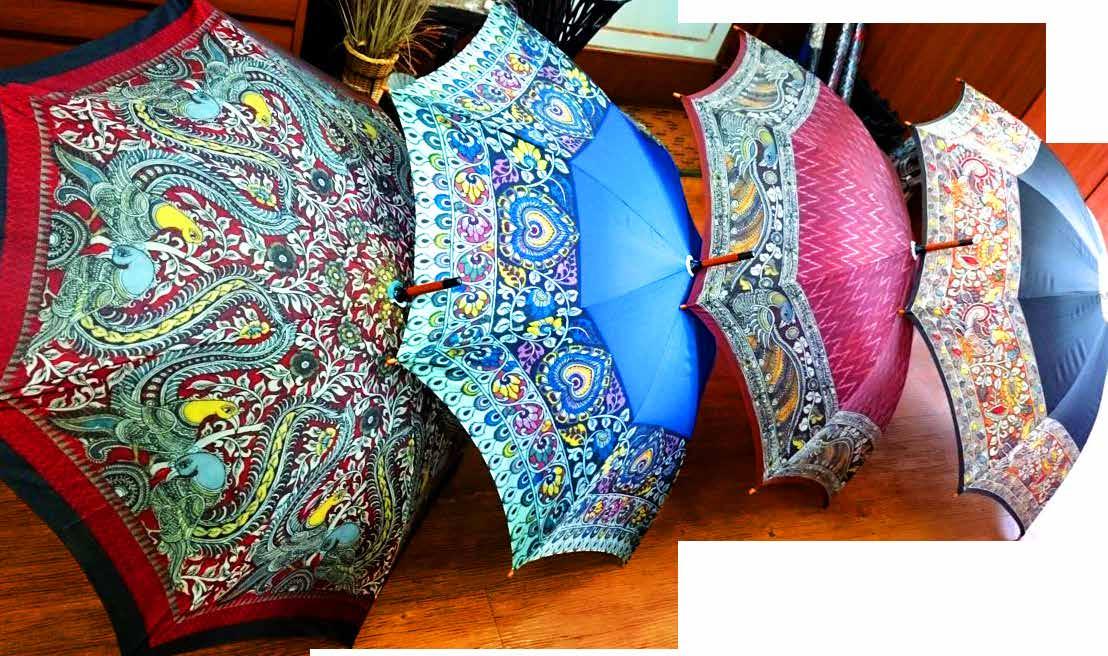
Craft activists suggest it’s time for private organisations to join hands and create a new and dynamic platform, with weavers and artisans as equal stakeholders
When next you pick up a cute hand-carved wooden toy or an exquisite tribal metalwork statue, painstakingly crafted by hours of winding metal thread round a core, do keep in mind that you are not just sharing the heritage of the country but supporting a cottage industry that is the livelihood of nearly 200 million Indians. The production of handicrafts is (after agriculture) the largest source of income among rural populations. Data from unofficial sources suggests the need for a more rigorous mapping and understanding of the sector.
When we speak of handicrafts, we are not including textiles in the category. India has an unparalleled textile heritage of hand-woven fabric and a rich seam of embellishment craft embracing embroidery, threadwork, sequins and unique mirror work which is used by haute couture labels around the world.
Just days before the National Handloom Day on 7 August, the central government abolished the handicrafts and handloom boards. The resolution to scrap the two advisory bodies was passed on 27 July 2020 by the Office of the Development Commissioner of Handlooms and was made in “consonance with the Government of India vision of ‘Minimum Government and Maximum Governance’ and leaner government machinery and the need for systematic rationalisation of government bodies.”

Meaningful

Predictably, the move has been met with mixed reactions. While revivalist NGO founders like Laila Tyabji have criticised the dismantling of platforms where craftspeople and weavers had a voice in policy-making that affected them, others like Jaitly, founder and president of the Dastakari Haat Samiti, feels glad that the All India Handloom Board has been abolished. “It was made gradually useless since the beginning of the 1990s,” she states. “I have been personally associated with this exercise in futility since then.” Instead of reinventing a “dead object”, Jaitly suggests creating something new, effective and dynamic in tune with the idea of ‘Atma Nirbhar Bharat’, “with inputs from truly experienced and knowledgeable persons rather than using it for patronage of favourites.”
In fact, the popular opinion seems to be that the government should be kept

out of bodies meant for the crafts sector, “unless there are specific individuals, who are passionate about the role that handlooms in India will play in the future in the country,” suggests textile designer and curator Mayank Mansingh Kaul. “There needs to be a good relationship between the private sector and the government, but these institutions have stopped being relevant.”
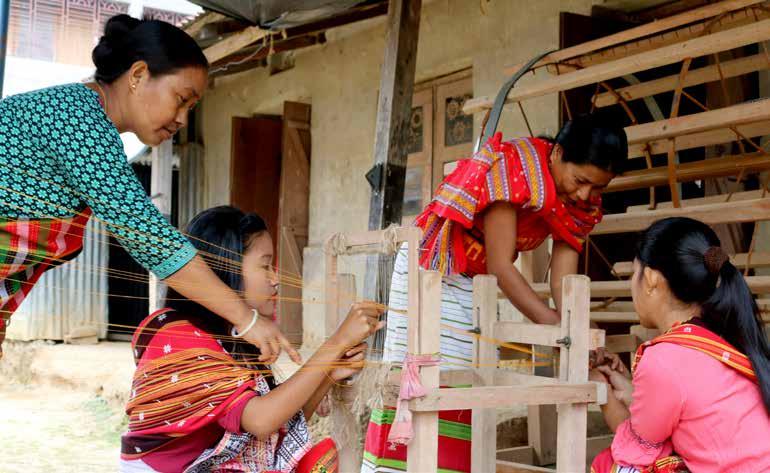
Out of step
Demonitisation in November 2016 hurt the handloom and handicrafts sector badly because most of the craftspeople dealt only in cash. Overnight, their collections were turned to useless paper money. The sprawling sector also suffers from an invisibility – there are no health or quality of life safety nets and natural disasters like floods ravage their workplaces and materials. As a result, many craftspeople and weavers of exquisite fabric now refuse to allow their children to follow the hereditary profession.
The pandemic has hurt the sector
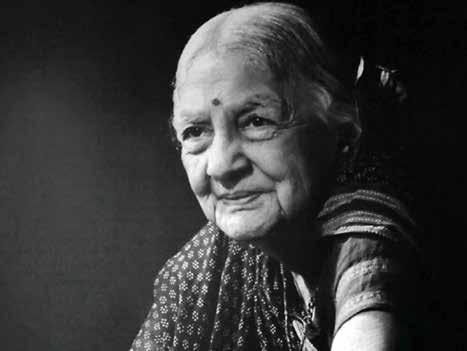
KAMALADEVI CHATTOPADHYAY AND PUPUL JAYAKAR
Heroines of India’s crafts preservation
It was 1975 and India was in the grip of Emergency madness. Trains ran on time, as Indians were repeatedly reminded, human rights were crushed and jails were filled with people who dared raise even a mere eyebrow against government diktats. The shots were increasingly being called by Sanjay Gandhi, younger son of PM Indira Gandhi whose idea of beautifying the capital Delhi included overnight razing of slums, leaving thousands homeless.
In the midst of this chaos, Pupul Jayakar, cultural czarina and close friend of Indira Gandhi heard a shocking news. It was rumoured that Sanjay Gandhi had ordered the demolition of the sacred and iconic bathing ghats of Benaras to create wider roads and a more modern city. Nobody dared to oppose him but there was panic in historical and cultural circles. Boldly, Pupul went to Indira Gandhi and passionately pleaded with the Prime Minister to stop her favourite son and powerful advisor from changing the millennia-old cityscape of the holiest of Indian cities. She succeeded and Indira Gandhi immediately cancelled the demolition orders.
That was Pupul Jayakar – imperious and a fearless crusader for culture, she leveraged her closeness to the Gandhi family – to three succeeding prime ministers - Jawaharlal Nehru, his daughter Indira Gandhi and her son Rajiv – to preside colossus-like over the country’s cultural scene for nearly 40 years, exposing its many facets overseas through expensive promotional
extravaganzas in the 1970s and 1980s.
Jayakar had an unerring eye for excellence. She talentspotted people long before they blossomed and encouraged several painters and artists who are today household names in India. She was a good organiser, tirelessly promoting local hand-loom and handicraft products and establishing the Indian National Trust for Art and Cultural Heritage (INTACH), primarily to preserve decaying monuments, in the early 1980s.
She also opened several design workshops, devised marketing strategies to develop traditional crafts and started the National Crafts Museum in the late Eighties and, in 1990, the National Institute of Fashion Technology in New Delhi.
She travelled extensively to remote places in India, seeking out local handicrafts and traditional skills and was a cultural chameleon, at home in contrasting milieux. She moved out of the power circles during Rajiv Gandhi’s time and settled in Mumbai to a life of letters, authoring many books. She died in 1997, aged 82.
The other Indian woman who contributed immensely to literally rescuing hundreds of dying arts and crafts from the dust of post-colonial freedom, was Kamaladevi Chattopadhyay. One of the earliest of modern Indian feminists and a freedom fighter, Kamaladevi’s role in independent India was actually seminal in the establishment of contemporary Indian theatre and the establishment of the Crafts Council of India which evolved into a platform to amplify the voices of Indian craftswomen and men and give them resources and a marketing space nationally and internationally.
Around 1952, Kamaladevi became concerned at the possibility that the introduction of Western methods of factory-based mass production in India as part of Nehru’s vision for India’s development, would affect traditional artisans, especially women in the unorganised sectors. She set up a series of crafts museums to hold and archive India’s indigenous arts and crafts that served as a storehouse for indigenous know how. This included the Theater Crafts Museum in Delhi.
She equally promoted arts and crafts, and instituted the National Awards for Master Craftsmen, and the culmination of her enterprising spirit led to the setting up of Central Cottage Industries Emporia throughout the nation to cater to the tastes of a nation, rising to its ancient glory.
Kamaladevi was a woman ahead of her times, she was instrumental in setting up the All India Handicrafts Board, she was also its first chairperson. The Crafts Council of India was also the first president of the World Crafts Council, Asia Pacific Region.
In 1964 she started the Natya Institute of Kathak and Choreography (NIKC), Bangalore, under the aegis of Bharatiya Natya Sangh, affiliated to the UNESCO.
Chattopadhyay also set up the National School of Drama and later headed the Sangeet Natak Akademi, and was also a member of UNESCO. Her acclaimed autobiography, Inner Recesses and Outer Spaces: Memoir was published in 1986. She died on 29 October 1988 in Bombay, aged 85


and not only impoverished craftspeople, it has literally brought their work to a standstill. However, this is also a time when the internet has opened up new channels of marketing and collaboration on design and utility between the creators and collectors. Although the recording and preserving of craft history has been woefully inadequate, today an increasing number of curators and scholars have started exploring the subject with academic rigour as well as a layman’s passion for beauty.




Perhaps it is time for the sector to take matters in its own hands, with private organisations collaborating on matters of key importance such as policy. “The space for people like us who are expected to speak on behalf of the weavers is long gone. They need to have a voice, even in reports like these,” says Kaul.
He added, “Newer formats where they can be heard need to be created. The designer-weaver communities need to come together to find their own mechanisms and feed into new networks, which then become powerful enough to influence government policies.”
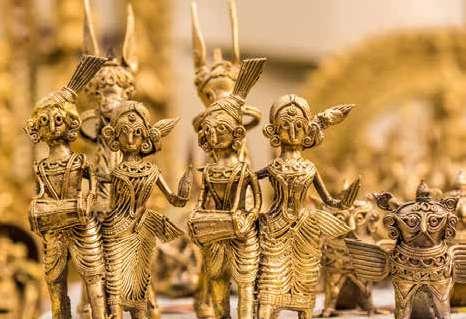

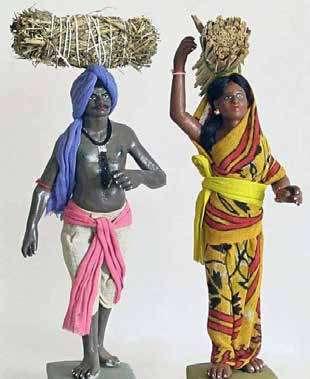

LIFESTYLE
THE WORK-FROM-HOME SYNDROME
We’ve become hostages to the WFH scenario. And the burnout is real! By MEERA RAVI
When the pandemic came to Bahrain’s shores in early March, the government took swift action to close community transmission of the deadly virus and shut schools and colleges, banned gatherings even in mosques and then proceeded to give government offices and the private sector the choice of allowing employees to Work From Home.
Admit it – when we first heard of WFH, we were delighted. Visions of taking a power nap between official meetings, working breakfast in bed and ‘jammies under your formal suit top took over. Many working women especially felt that the pre-pandemic calls for flexi-time had been answered and started drawing up plans for how to manage their WFH schedules and the extra time that they felt they would get. Poor innocents!
What most of us realised was that the whole exercise had upended our workstyle in a dangerous way. Just like children struggled to get used to online classes, adults working from home found that the exercise called for a new kind of discipline in order to avoid WFH burnout.
Yes, that’s a new term that we are hearing more often these days. Remember how, before the pandemic, the French government issued labour laws that bosses could not contact employees on the phone after office hours? Well, that kind of social distancing and effort to manage worklife balance disappeared in the WFH era and people found themselves putting in extra hours, sometimes well into the evening, and not taking breaks to refresh themselves or holidays from the workplace. We have painted ourselves into a corner and the result is that we are exhausted and the very important rituals that were markers of our workday have disappeared. Here are six ways to make your WFH experience stressful and more meaningful:

1. Time table:
Working at an office provides a natural cut-off time for the workday, even though you might be working late you know that at some point you have to wrap up and go to your living space a.k.a. home. Try and maintain that routine for your WFH practice also. Log in at approximately the same time as your office opens and keep your breaks to the minimum. Most important, discuss with your superiors and team members about signing off for the day at a set time so that everybody can manage expectations.
2. Set goals:
Set a schedule of goals to achieve so that you can track progress. Often you lose focus during the day and try and make up for lost time in the evening, leading to unnecessary overtime. WFH routines often lead to important but non-urgent tasks being postponed till they have to be tackled at some point, eating into end-of-the-day time to unwind. An old-fashioned to-do list helps to keep a check on progress.

3. Take breaks:
Don’t feel guilty about taking a break. In the office, if you felt overwhelmed, you could just walk up to a colleague to have a work chat. That’s not possible in the WFH scene. But don’t just take a break in front of your laptop screen. Get away from the workspace. Stretch, do some chair yoga, make yourself a cuppa or go meet the family next door! Keep it short – about 15 minutes for every 90 that you spend at work is a fair ratio. In fact, psychologists agree that taking breaks and even taking leave from work will ultimately lead to better productivity. Of course, employers may find it difficult to define “leave” when

employees are still in the same physical space they were in, but they will have to get used to it.
With WFH, HR policies are being rewritten. The early months of working from home were more focused on the transition and its technical requirements. But now, ‘employee experience’ is a term you hear increasingly frequently in HR circles
The old mindset of “monitoring, evaluating, surveilling” employees will have to be replaced. Seniors and bosses have to learn to evaluate quality of work

and trust their team. Mental health experts stress the
5. Fine print:
WFH has many ambiguities that are still being decoded. For instance, IT security to protect official data from cyber criminals and hackers is the responsibility of the company. In Bahrain, where utility bills have soared skywards, where does that leave people who are using electricity doing office
6. Lights off:
need for a routine and setting of clear boundaries between working and personal time. The in-between breaks aside, develop a “closure ritual” every day—a small activity to mark the end of the workday that signals to your brain that it’s time to turn off the lights.
4.Employee experience:
work in their living room?

Usha Ramesh Vice President – Global Head of Communications & Brand Management Al Baraka Banking Group


In April, Microsoft’s Workplace Insight team started tracking changes in workplace dynamics using a 350-employee group, looking to get some answers to questions like “How will employees integrate and separate
Work from home spell resulted in a remarkable increase in productivity since there were less interruptions by way of phone calls and casual chats that studs one’s routine. That is not to say that a barrage of WhatsApp messages and pings on Teams could be “ ignored. But then the convenient ‘brb’ helped! In the end, one could get chunks of peaceful time for intense conceptual work. Projects that were important, but set aside, actually progressed well.
This resulted in a sense of accomplishment. Teams was a boon to share screens and meetings.
The fall out was that ambitious milestones were set and boundaries between work and life almost entirely disappeared. The contours of a typical work day almost completely changed. It was difficult to tear away from the laptop. With no commute time, we logged in very early and with nothing much to do and no activities outside of home, one had no reason to be unavailable.
Well, this spell did completely obliterate work-life balance – which was otherwise taken for granted in this beautiful island. The illusion of a nice long relaxation spell, actually turned out to be 10 to 13-hour work shifts to say the least. Quite frankly resumption of full-time duty from the work place was a happy welcome. “ SALAAM BAHRAIN | August | 2020



